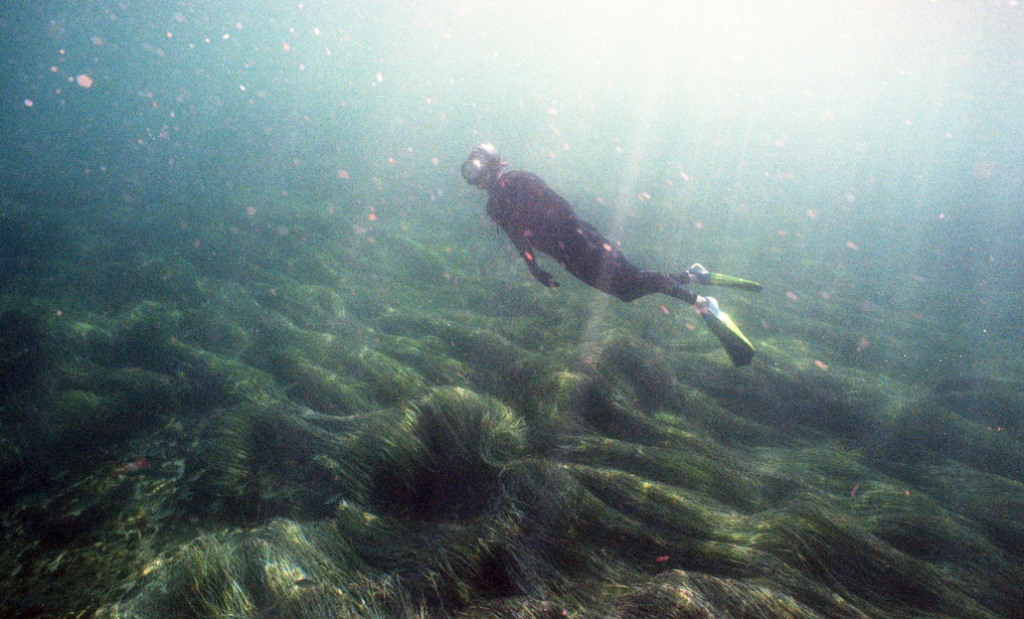

Ten years ago, California established one of the largest marine protected area networks in the world. More than a hundred coastal areas were designated with restrictions that limit or completely ban the take of marine resources in order to allow the areas to stay wild and productive.
Are you surfing in an MPA? Find your MPA here!
The California Department of Fish and Wildlife is now analyzing how this network has performed through a series of workshop where the public can share their perspectives. This 'Marine Protected Area Decadal Management Review' will influence the state's understanding of whether and how restrictions on our use of marine areas should evolve. Surfrider is strongly encouraging anyone who enjoys their MPAs to speak up at these meetings.
'Non-consumptive' users like surfers, swimmers, and photographers tend to be particularly poorly represented in these meetings, even though our experience in the ocean is deeply impacted by MPA management. The meeting for non-consumptive users will take place on November 3rd from 1-3 pm.
The meeting will be virtual and includes background on the review process, followed by a discussion in breakout rooms where attendees will be asked about their highest priorities for reviewing the MPAs and how to define and measure success in MPA management.
Here's what we think is important to emphasize in this meeting:
- MANAGEMENT IS KEY - MPA's are an important piece of safeguarding life in the ocean. 16% of our state waters have been conserved since the Marine Life Protection Act was passed in 1999 and there is strong evidence that this has supported biological diversity and buffered against impacts of climate change.
- SCIENCE MATTERS- Not all MPAs are created equal and different users' experience can be biased based on location, history, and other unique aspects of a marine area. We recommend using the MPA guide to understand and evaluate MPAs.
- THIS CLIMATE MOMENT COUNTS - As iconic ecosystems like kelp forests are disappearing, protecting and restoring key habitats that underpin California's rich biodiversity will increase our resilience to climate change. This is critical to life in the oceans.
- BIODIVERSITY MATTERS - A 'healthy' MPA is one where species abundance and diversity has been maintained and/or increased over the last ten years. A healthy MPA has a stable ecosystem of 'keystone' flora and fauna (ie otter, urchin, and spiny lobsters to support a thriving kelp forest in areas of the NorthCoast) and presence of top predators like white sharks.
- A LOT OF US CARE ABOUT THE COAST - The health and productivity of California waters concerns us all. Surfrider's mission is to protect ocean, waves, and beaches and we have 35,000 members in California alone. With one of the most renowned coasts in the world, California-based individuals account for about 60% of Surfrider's membership.
- LET SACRED PLACES SURVIVE - Many parts of our coast are sacred to cultures that are linked to the ocean. By maintaining or expanding take restrictions in these areas, we can preserve places that are vital to maintaining unique human identities and perspectives.
- THE OCEAN IS RICH - Ocean tourism is a huge money making venture for California. Visitors do not want to go whale watching if there are no whales or snorkeling if there are no fish. More than $26 billion in GDP is generated a year in California due to ocean-dependent tourism.
- WE ALL DESERVE A HEALTHY OCEAN - An effective MPA maintains or increases productivity which generally means more people (often people with fewer means) who can enjoy its bounty in some form. A thriving MPA for instance, may include enhanced shore-based fisheries that can be accessed by communities with fewer resources like gasoline and boats.
